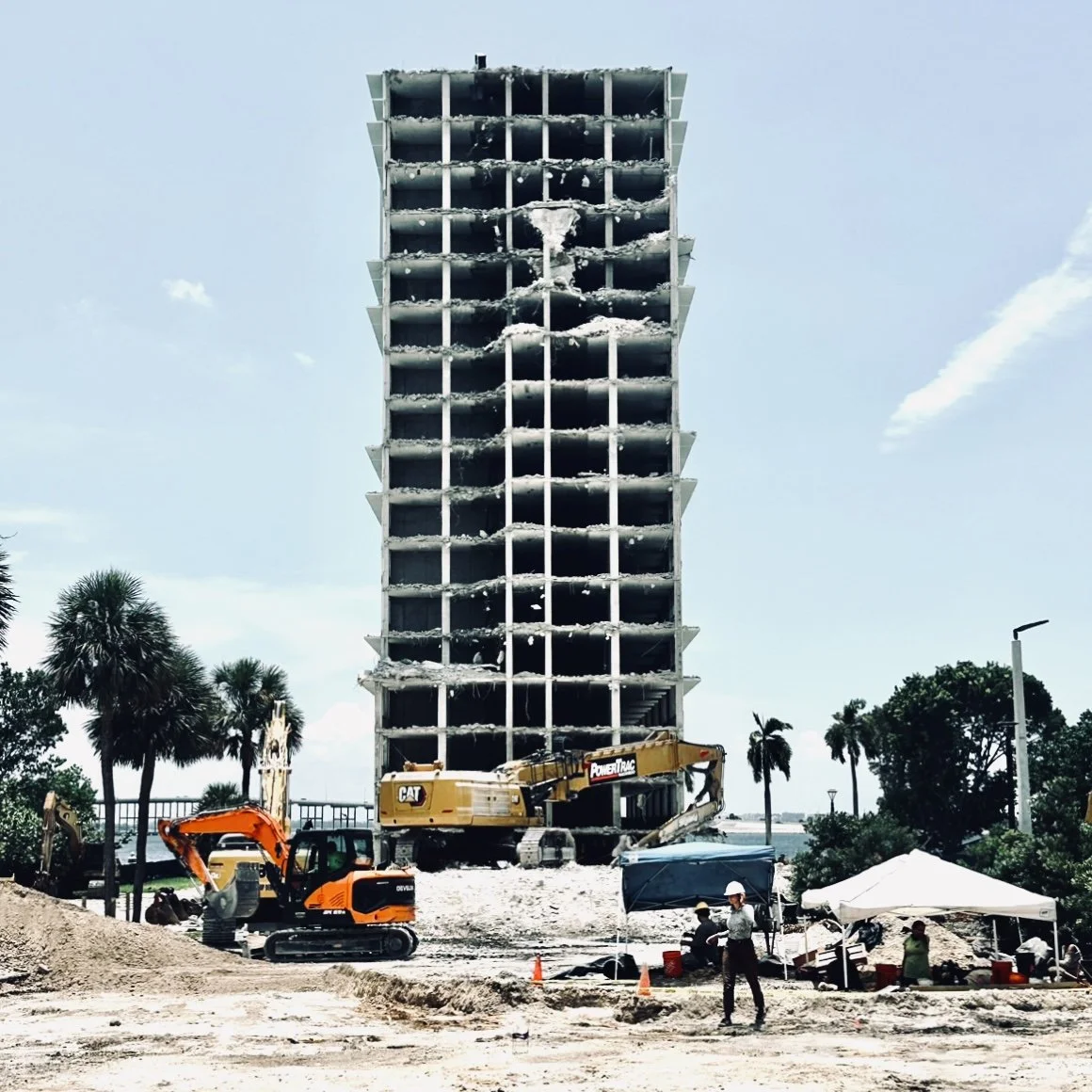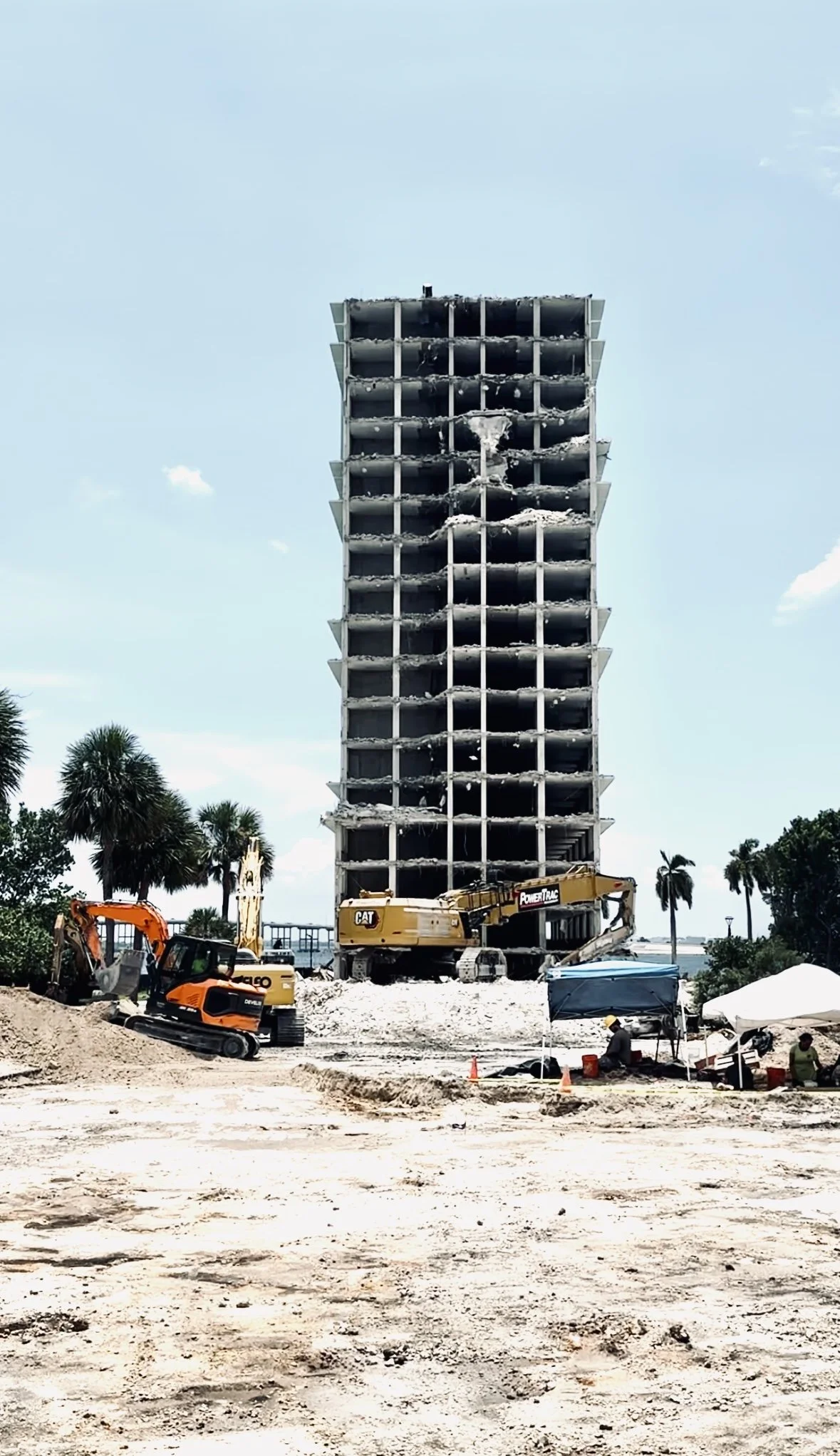The Building That Didn't Fit the Brochure
Another quiet building is gone in Brickell. No public hearing. No mural. No mention. Just a cleared site where the sidewalk forgets what came before it.
JULY 29TH 2024 | Nadia Bouzid
The Stanley Axelrod UTD Residences stood here for nearly sixty years. Seventeen stories. Two hundred seventy-two units of federally subsidized senior housing. Built in 1966. The kind of place most people never looked at twice. The windows didn’t sparkle. The signage hadn’t been updated in decades. But for the residents inside, it was home. For some, the only one they could afford to stay in.
What made it unusual was not the building. It was the land.
Positioned along Brickell Avenue, on a stretch that has become more valuable than visible, the parcel sat just close enough to the water and just far enough from the noise to matter. Not quite a trophy corner. But a serious asset. Especially once the affordability restrictions expired in 2019.
But even before that, someone had been watching.
In 2014, Integra Investments purchased the site for fourteen million. The number did not reflect aspiration. It reflected timing. By 2020, the land had been appraised for more than thirty-six million. Not because it changed. But because the rules around it did.
JULY 29TH 2024 | Nadia Bouzid
Demolition began quietly. No press release. No delay. By 2024, the building was gone.
What is coming is The St. Regis Residences, Brickell. One tower. One hundred fifty-two units. Prices that do not blink at forty million. It will have all the signatures of the branded luxury category. Butler service. Amenity floors. Interiors dressed for legacy. You will hear about the chef partners. The lighting design. The spa menus.
But you will not hear a single mention of Axelrod.
Not in the marketing. Not in the model unit. Not in the developer statements about elegance and evolution.
That building did not fit the narrative. So it was excluded.
But someone should say it out loud.
Affordable housing on Brickell Avenue is nearly extinct. The fact that this site lasted as long as it did was a kind of miracle. And when its protections lifted, it was never going to survive the next cycle. There were meetings. Lobbyists. Strategists. This was never just about construction. It was about position. And who could hold it long enough to convert it.
The building was simple. But the play was sophisticated.
Now, the parcel will carry a new name. A new kind of resident. A different idea of permanence. And maybe that is fine. Cities evolve. Brickell is moving fast. And the new tower will be beautiful.
But the story is incomplete if we only celebrate the future and skip the part about what made space for it.
The people who lived in Axelrod did not have PR teams. They did not speak in renderings. But they were part of this city. And their presence made this land matter in a very different way. One that does not show up in square footage or per-floor premiums.
One thing will stay.
The banyan tree at the entrance. The one that has been there longer than most people in Brickell. It has survived hurricanes, concrete mixers, salt air, and silence. It is the only part of the site not being reimagined.
Everything else is being replaced.
We do not need to mourn the past to say it clearly.
We just need to be honest about how quickly it disappears.

